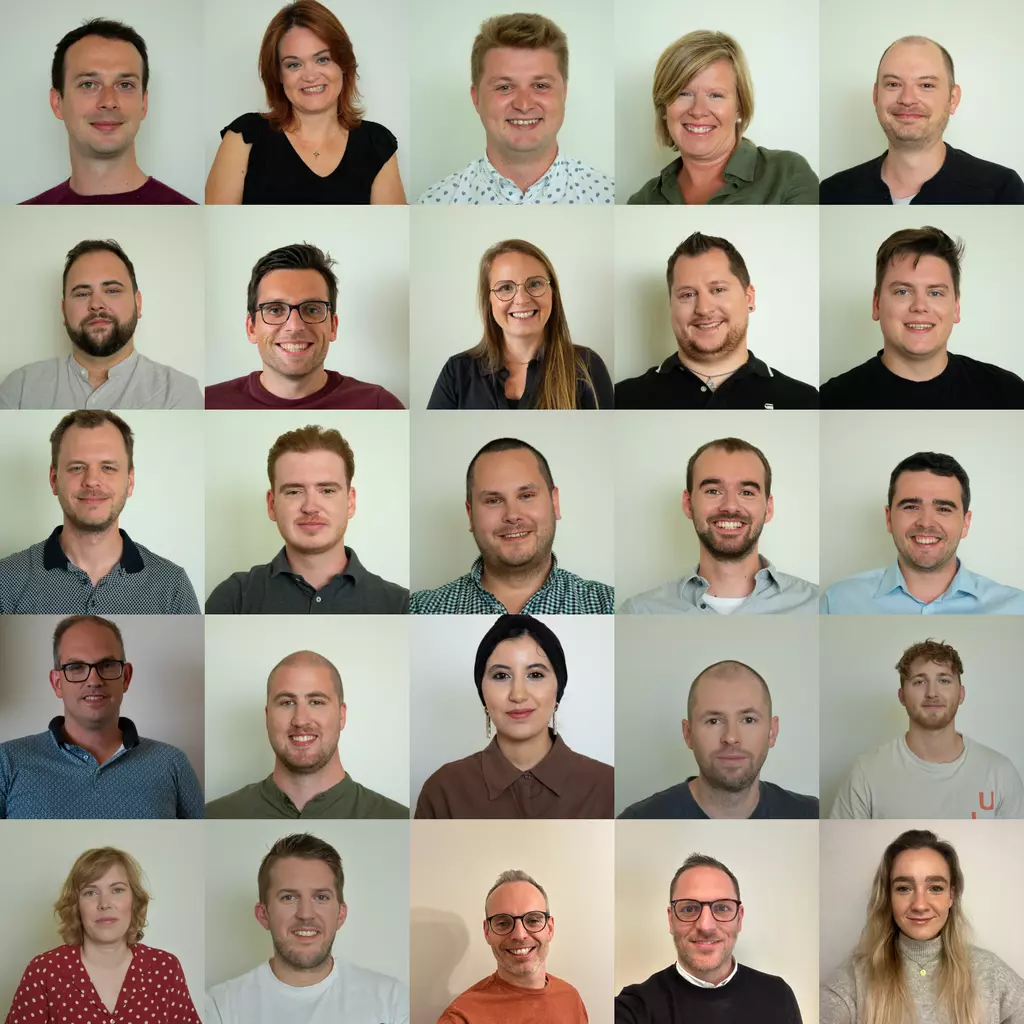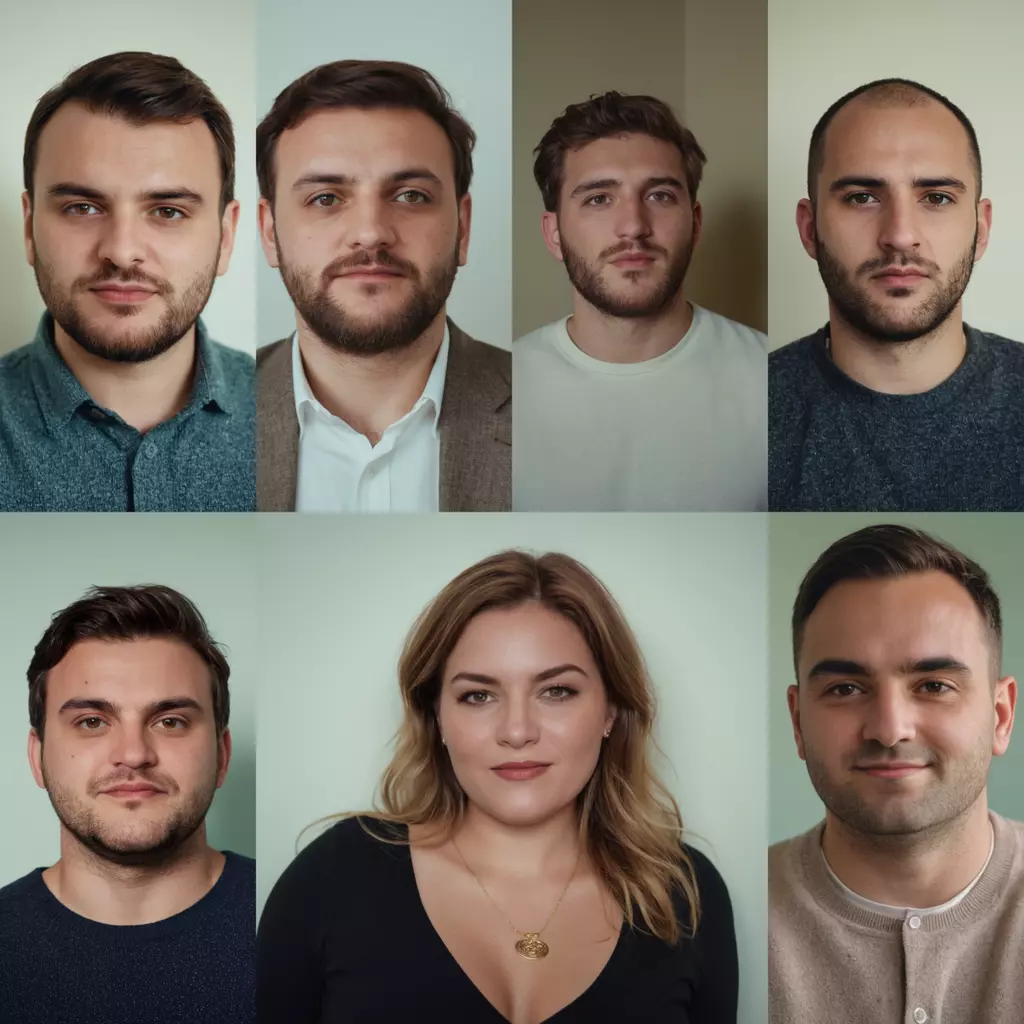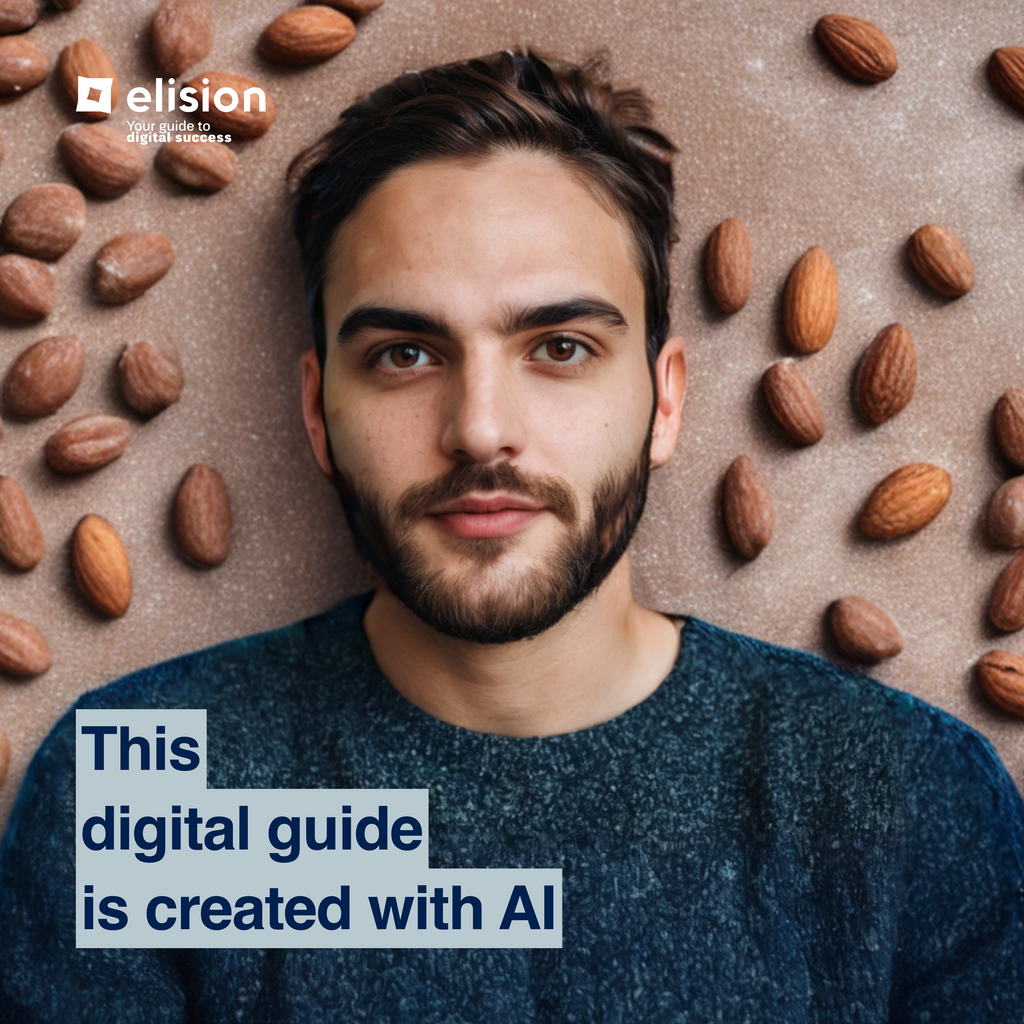As you've reached this point, we hope you enjoy your chocolate while reading the story of our Artificial Digital Guide. If not, reach out to us.
In our making of this guide, we aspire to show you the potential and the pitfalls of AI through our application of generative AI.
A brief definition of generative AI
The best description we found can be accredited to Google:
“Generative AI or generative artificial intelligence refers to the use of AI to create new content, like text, images, music, audio, and videos.
Generative AI is powered by foundation models (large AI models) that can multi-task and perform out-of-the-box tasks, including summarization, Q&A, classification, and more. Plus, with minimal training required, foundation models can be adapted for targeted use cases with very little example data.”
For many, this might sound like a lot of noise, and truthfully, it is! Within specific diffusion models, generative AI converts noise – similar to the static seen on old broadband televisions – into an image. We'll illustrate this process with a straightforward example from the linked NVIDIA blog. While our explanation might not strictly be the best example of mathematical accuracy, it will convey the core principles in an efficient way.

From left to right
Throughout the training process, the generative AI model has learned to break down images into static noise. Starting from the left and moving to the right, the model progressively adds noise, while gaining an understanding of the numerical representation of an image, referred to as a seed. A seed consists of a set of numbers that instructs the AI how to generate an image.
When a user issues a prompt, the system employs a Large Language Model (LLM) to understand the prompt and generate an image from a selected seed. This is a step-by-step process iterating over the same image from left to right until it accurately represents the given prompt.
Stable Diffusion
For this Digital Guide, we employed Stable Diffusion, the open-source AI image generator. Currently, there is a rapidly expanding landscape of comparable platforms such as DALL-E 2, MidJourney, Nvidia NeMo, Adobe Sensei, and Google Generative AI.
The story of
our Artificial Digital Guide
Our idea was to use AI to blend everyone's faces. We had no idea if it would work but it turned out to be perfectly feasible.
To do so, we needed visual input. To create a representation of Elision’s Digital Guides we used the photos shown here. These were from an official photoshoot, with written consent for usage. This already fulfills one of our key criteria – a consensual dataset for our digital guides.

Next step:
Face blending
The tool we used only allowed four faces to be mixed at the same time. On the left, you can see the result of our faces blending. When working with AI, the meticulous curation of both data and output is critical. Factors like representation, hallucinations, and the accuracy of the output must always be considered. We attentively selected the most representative faces based on the input images.
The generation process was done offline in a private and GDPR-compliant space. Each generation took us about 30 seconds using the following computer specifications:
- Processor: AMD Ryzen 9 5900x 12-Core processor (24CPUs), ~3.9GHz
- Graphics Card: NVIDIA GeForce RTX 3080 (10GB)
- Memory: 32 GB DDR4
- Disk Usage: 50 GB

The (first) final result
Below, you can see the first faces that came out of our iterations. It was exciting to witness the birth of our Artificial Digital Guide: the new face for Elision. We had some big plans for this “person”!
But …
Should we opt for a male or female guide? Do these faces truly represent all our employees, or do they give off a vibe reminiscent of the modeling industry? Will our employees continue to identify with Elision? Do these faces align with our future goals? Do they represent the company we want to be?
We had more questions than answers.

A vision of a broader Elision
It was clear that these artificial faces were not representative of the company we wanted to be. We wanted this guide to be inclusive.
We set out on our journey to create a better representation of our digital guide. Here is how we tackled our challenges:
- Beauty standards: Beauty is subjective, yet our Artificial Digital Guide requires a level of authenticity in the context of digital customer experiences. This means some might wake up early to monitor deployments before typical work hours. In our experience, this can lead to a slightly wearier look. To tackle this, we introduced additional prompts such as: "average-looking".
- Inclusivity: In our data set, 19 out of 25 images represent Caucasian males. To promote inclusivity, we decreased the weight of those nineteen images, leading to a better-balanced dataset in line with our targeted outcome.
- Training data: Addressing a more challenging issue, we employed the Juggernaut XL model for our image generation. This model has primarily been trained on Western actors and models, introducing bias into our dataset. A potential solution involves training our model, using images of our own employees.
- The perfect haircut: Generative AI does a rather amazing job on haircuts, perhaps too good of a job ... Consequently, we recognized the need for our Artificial Digital Guide to pay a visit to the barber. In the end, we opted for a trim that carries a touch of messiness, yet retains a business casual appeal.
Implementing all of the above brought us to a result where we still had a lot of conversations on the correctness of representation. The question lingered: "Do these traits truly reflect who we are?" Nevertheless, there was a collective sense that we dedicated considerable effort to underscore the challenges of generative AI for the application.
A visit to the barber!
In this video, you can see how image generation works for our model, as we try out different haircuts. We tried balding, messy hair, man bun, shaved, ...
Taking into account the EU AI Act
As part of its digital strategy, the EU aims to regulate artificial intelligence to ensure better conditions for the development and use of this innovative technology. AI can create many benefits, such as better healthcare; safer and cleaner transport; more efficient manufacturing; and cheaper and more sustainable energy. But it also raises concerns and challenges that necessitate careful consideration.
In the AI act (read more) there are 4 levels of risk and a set of guidelines per level.
- Unacceptable risk
- High risk
- Minimal risk
- Specific transparency risk
Our case falls under minimal and specific transparency risk. This motivated us to ensure Elision's compliance with future developments, and that is why ...
- Our Artificial Digital Guide will always come with the line: "This digital guide was created using AI." (AI ACT)
- Confronting non-bias is the hardest but most important topic. We already elaborated on all the efforts we made to eliminate bias from our artificial digital guide. However, one fundamental question remains: "Is it possible for humans to be entirely non-biased? And by extension, can AI?" This, in our opinion, stresses the importance of output and data curation! (AI ACT)
- Our dataset was never used in a 3rd party online AI generation platform, emphasizing our consistent ownership of data. The written consent obtained from our employees underscores our unwavering commitment to safeguarding their data. (GDPR/Consent)
- In line with this article, we aim to provide complete transparency regarding our sources and tools. In case of doubt, please send us an e-mail using our contact form. (AI ACT)
Unwrapping
our Artificial Digital Guide
So, are these traits a true reflection of who we are? For now, we will settle with the results. In the future, as Elision grows, our Artificial Digital Guide might change. This message is intended to spark much-needed discussions on the strengths and pitfalls of AI – a remarkable and effective tool in the right hands, but potentially dangerous without proper guidance.
We wish you a 2024 filled to the brim with intelligence, and for the lucky ones, enjoy your Chocolate eXperience.

Elision is happy to help!
As a full-service CX partner, we help companies transition to a more sustainable customer experience. Our team of motivated and enthusiastic individuals will provide guidance and support in every direction. We can draw on an extensive portfolio of SAP CX and other best-of-breed platforms for commerce solutions that will take your digital experience to the next level. Plus, we're eager to share more insights on the most important trends in CX!


